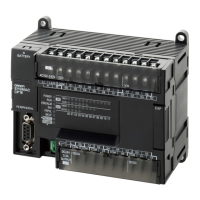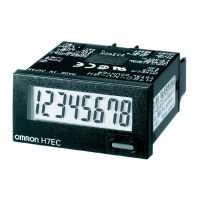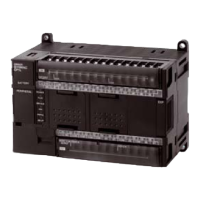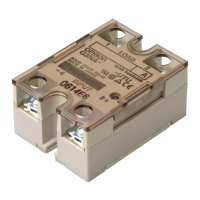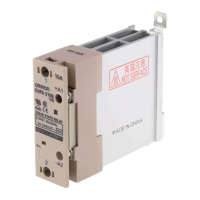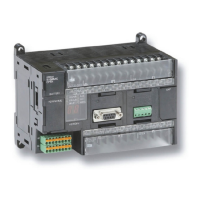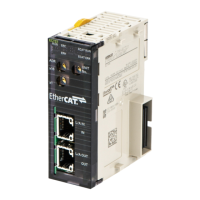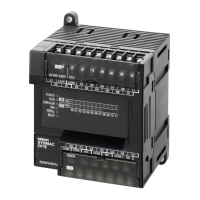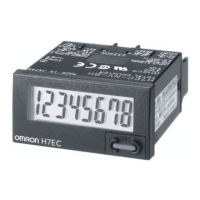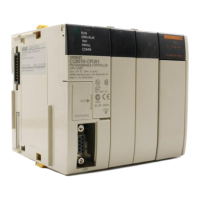1 Introduction
1-4
NJ/NX-series CPU Unit Built-in EtherNet/IP Port User’s Manual (W506)
Network Management with an SNMP Manager
The SNMP agent passes internal status information from the built-in EtherNet/IP port to network
management software that uses an SNMP manager.
* A separate SNMP manager is necessary for network management.
Complete Troubleshooting Functions
A variety of functions are provided to quickly identify and handle errors.
• Self-diagnosis at startup
• Event log that records the time of occurrence and other error details
CIP (Common Industrial Protocol)
CIP is a shared industrial protocol for the OSI application layer. The CIP is used in networks
such as EtherNet/IP, CompoNet, and DeviceNet. Data can be routed easily between networks
that are based on the CIP. You can therefore easily configure a transparent network from the
field device level to the host level. The CIP has the following advantages.
• Destination nodes are specified by a relative path, without fixed routing tables.
• The CIP uses the producer/consumer model. Nodes in the network are arranged on the same
level and it is possible to communicate with required devices whenever it is necessary. The
consumer node will receive data sent from a producer node when the connection ID in the
packet indicates that the node requires the data. Because the producer can send the same
data with the same characteristics in a multicast format, the time required for the transfer is
fixed and not dependent on the number of consumer nodes. (Either multicast or unicast can
be selected.)
Two EtherNet/IP Communications Ports as a Standard Feature, Equipped with
IP Routing Function (Only with the NX701 CPU Unit)
The CPU Unit is equipped with two EtherNet/IP ports for EtherNet/IP communications as standard.
This feature allows you to separate the information network from the control network. In addition, the
built-in EtherNet/IP ports have an IP routing function that sends IP packets to devices on other IP
network segments.
* To use the function, you must set the IP router table and default gateway settings for each device on the net-
work appropriately for your network configuration. For details on the settings, refer to 5-1 TCP/IP Settings
Display.
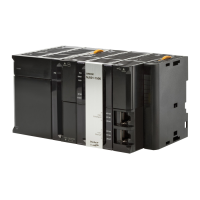
